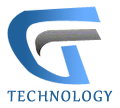It’s fair to say that an organization is as good as its documents. Whether it’s policy documents, internal procedures, customer data, HR documentation, training material, research documents, historical documentation, marketing documentation, procurement data, etc. The more efficient the document control process, the easier it is to everyone in any organization.
It is therefore critical for any organization to look for ways to streamline their document control process by adopting an efficient solution that makes the capturing, processing, storage, and retrieval processes easier across all departments. Technology is at the center stage of modern document control processes with organizations phasing out traditional manual filing systems with and adopting digitization.
Modern Technologies Streamlining Document Control
Document scanning software available today enable big and small organizations to digitize records allowing them to speed up and streamline their document control processes while enjoying the flexibility, versatility, and accuracy that comes with digital databases and systems. That said, digitization is but a piece of the puzzle when it comes to technology-driven document control in today’s fast-paced business environment. Other technologies like AI driven business intelligence systems and Big Data are revolutionizing the whole concept of data management in many industries.
There are several ways technology can streamline your document control process. Here are ten of them
Why You Should Embrace Technology-Driven Document Control (10 Reasons)
1) Automated Data Capture
Perhaps the most talked about aspect of modern documentation processes, automated data capture can significantly improve data collection and storage activities in your organization. Gone are the days when you had to hire an army of data entry specialists to capture bulk data into manual or even digital databases manually. Through the use of modern document scanning software, you can automate the whole process of obtaining primary data needed for storage or processing.
You’ve probably heard of the term “paperless offices,” it’s a popular trend in modern organizations looking to cut down on stationery costs and by extension, saving the environment. However, document scanning software doesn’t just help organizations save cost or go green, by making manual records retrievable through digital media, they can take advantage of new technologies to organize, process and store their data in ways never imagined before.
Data capture are being used in almost all industries that deal with all forms of primary data. OCR document scanning software available out there enable organizations to scan thousands of documents in a short period. From museums digitizing old records to extend their lifespan in terms of availability to law firms who scan court files and client data; most organizations are finding it easier to manage digitized documents using automated data document scanning software.
2) Streamlining Workflows
A typical organization deals with all kinds of documents, each with its path within the various departments and organizational structure. For instance, some invoices follow a well laid down approval procedure within an organization; HR departments deal with all kinds of documents, including job applications, employee data, etc. If not well structured, documentation can be quite chaotic; records get lost or misplaced, long delays are experienced as the documents move from one stage to another, retrieval can be slow and dissemination even more tedious.
By embracing technology in document control processes, all documents move through a strictly defined lifecycle. Workflow is significantly streamlined as relevant data is made available to the right personnel at the right time. The use of technology for document control processes substantially improves the routing, review, and approval of documents in an organization while saving costs.
Think of a marketing strategy document as an example, to come up with a robust marketing strategy; an organization has to do a market survey that may involve primary data capture in the field. The data is then uploaded to the system and made available to in-house analysts that pore through it and turn it into meaningful reports with all the fancy charts and tables. Then marketing leads can use the data to come up with proposals they will pitch to management. The end product may be a strategy document that will be shared with marketers in the field. Technology streamlines the entire documentation process making workflows much more organized and efficient.
3) Maintaining Document Integrity
One of the dangers of manual document processes is the risk of losing the integrity of critical company documents. As documents move from one person to another, they are prone to all kinds of risks that can impact your company negatively. People can mess up physical documents in several ways, some due to human error, while others can alter documents maliciously.
Technology in document control allows an organization to devise strict document handling rules, therefore, maintaining a higher level of integrity and accuracy. For instance, rules can be set to allow only authorized employees to perform certain operations on specific documents. Accountants can be allowed to view and manipulate invoices, ledgers, among others.
The document scanning software also helps maintain the integrity and accuracy of records in the creation phase. It’s easier to track changes and anomalies with modern technology-driven document control processes.
4) Easy Integration with Popular Systems
Most businesses already rely heavily on popular office software and applications like Microsoft Office, QuickBooks/Sage, ERP systems, CRM’s among others. However, it’s not uncommon to find businesses taking a traditional approach to document management while still using these software solutions. They print their documents and maintain large manual filing systems and use traditional dissemination and distribution processes.
It is easier to integrate digital records with modern office software solutions than it is to use manual processes. You can attach scanned documents in popular software packages as supporting documentation. Some have automated character recognition as well, allowing you to integrate primary data to existing documentation seamlessly.
5) Streamlined Change Management and Staff Training
With the use of technology, an organization can handle changes in procedures and documentation much more efficiently. Global changes can be made centrally and quickly adopted across the organization. A good example is the change of letterheads; it’s so much easier to get everyone on board by making a global change to the letterhead and releasing it for use in an instant.
Sometimes changes are made to the way employees are required to manipulate or create certain documents. Things like how a document is formatted, naming conventions, and other technical details. These changes may need some form of training, so employees know how to handle their assignments in line with the new requirements. With technology-driven document control, training can be administered through tailor-made training manuals, including individual instruction on the system itself.
6) Better Security
Much as cybersecurity is an ongoing threat to organizations today, it’s generally easier to maintain document security through the use of technology. See how White House is fighting against it. Most database and data management systems come with robust data logging and access control modules that guarantee the security and integrity of data in your organization.
You can keep an eye on critical documents in your organization by investing in rock-solid data security systems and security training for staff in every department. Using technology in document control is a tried and tested strategy to protect documents in modern organizations.
7) Streamlining Document Publishing
One of the essential elements in any document control process, document publishing is one area where technology can be deployed to simplify processes and reduce errors. Publishing in document control involves degerming when, where, and how a document is released after approval. Who gets to see the document? Is it an internal or external document? How long should it stay published? When is it ready for publishing?
Errors in the publishing of organizational documents have always been a constant source of pain and untold agony in most organizations for many years. An internal memo that was published to the general public or released too early emails sent to wrong recipients etc. People lose jobs; companies collapse; employees go to jail due to an error in the publishing phase of document control. Technological solutions can be used to streamline and safeguard the document publishing process in an organization.
8) Automating Document Obsoletion Processes
A critical document control phase in most organizations, document obsoletion, is the processes of determining the lifecycle of a document in an organization. When is a document actively in use and when does it become obsolete in an organization? With many documents being produced and processed daily, it easy to lose track of document versions and unused documents.
With the use of technological solutions, an organization can easily automate the document obsoletion process. Use the document scanning software to capture data and give it a version and timestamp. With these solutions, document versions can be tracked easily; outdated documents can be destroyed or phased out, documents can be given a well-defined lifecycle.
9) Enhanced Reporting
How quickly can you generate reports to be used in decision making with your current documentation system? Reporting is the primary function of any document system; documents have no meaning if an organization can’t generate accurate and on-time reports based on existing data for better decision making. Technology-driven document control ensures that data is structured and made available in a way that aids the report generation process in an organization.
10) Take Advantage of Emerging Technologies!
Cloud computing, artificial intelligence, Big Data, deep learning business intelligence, online collaboration, remote hiring; these are all technologies shaping the modern business environment. Companies are using their data to device winning strategies for higher profitability and efficiency. By adopting technology in your document control processes, you will make it easier to integrate these cutting-edge solutions with your organization and reap the benefits.
Summary
Technology adoption is the way to go when it comes to modern document control and management. Just a few years ago, it was unimaginable to think that we could have a paperless business environment, now we have sophisticated document scanning software that is allowing more and businesses to go paperless. Documents are made more available, easier to access, and easier to maintain. Workflows are significantly streamlined, and productivity is given a boost.




